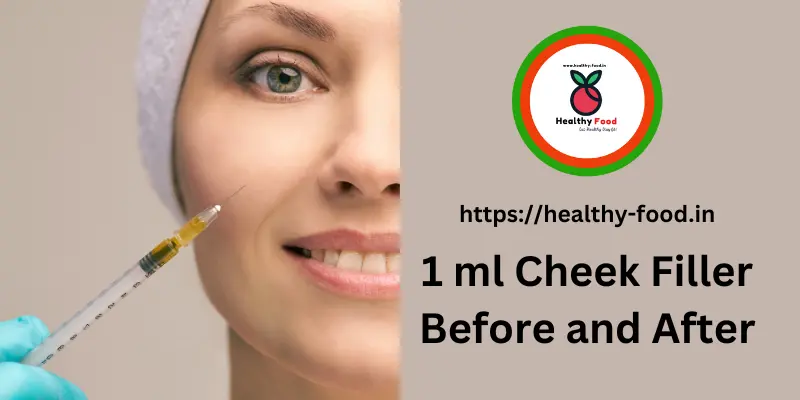Article Contents
1 ml Cheek Filler Before and After
1 ml cheek filler before and after results; figuring out how much filler you need to get noticeable results can take time to understand.
It can rejuvenate your appearance by strategically placing a few milliliters of dermal filler. Most people only require 1 ml of dermal filler to improve their entire face.
Depending on the area that needs to be treated, each person will require a different amount of filler. The type and amount of filler treatment you need will depend on several factors and elements, which include:
- The depth of your wrinkles.
- The amount of volume lost.
- The features, shape, and appearance of your face.
- The type of fillers you need for the best result.
You should discuss these factors with your doctor before getting treatment to determine how much filler is needed to achieve desired results.
How far does 1 ml of dermal filler go
In the past, aestheticians would inject 1 ml of dermal filler into a single area of the face. For instance, 1 ml of filler can improve your lips and cheeks, but only 1 ml of filler can enhance your entire face.
Dermal filler is very hydrophilic, which mixes and dissolves well in water. It lets 1 mL of dermal filler go a long way because it binds to water and gets voluminous. When injected at specific strategic points on the face, dermal fillers give the appearance of younger skin as projected.
It will be necessary to inject dermal filler slower if the practitioner only uses 1 mL for the entire face. They have a greater chance of locating the exact problem area on the patient’s face and resolving it with a smaller amount of filler, so they can also be more precise with less filler.
How much filler is required for different parts of the face?
Most patients see excellent results with just a few milliliters of dermal filler. Cosmetic treatments for each part of the face will require various amounts of filler.
Lip Filler
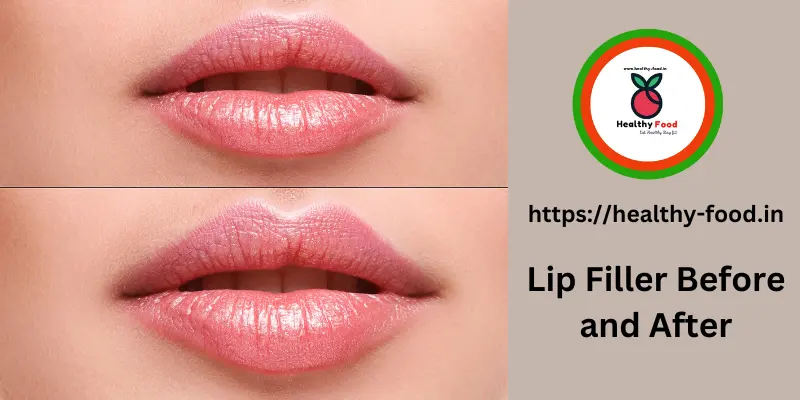
Filler for lips has the potential to improve the symmetry of the lips, as well as the softness and smoothness of the lips.
The most frequently enhanced area is the body of the lips, usually on the top and bottom lips, to create a natural balance.
The standard norm is to inject 1 ml of lip filler every six months to maintain a great look. However, we recommend filling the lips less frequently and using only a small amount at each session.
Lips can be fuller and more shaped with just 1 ml of lip filler.
Cheek filler
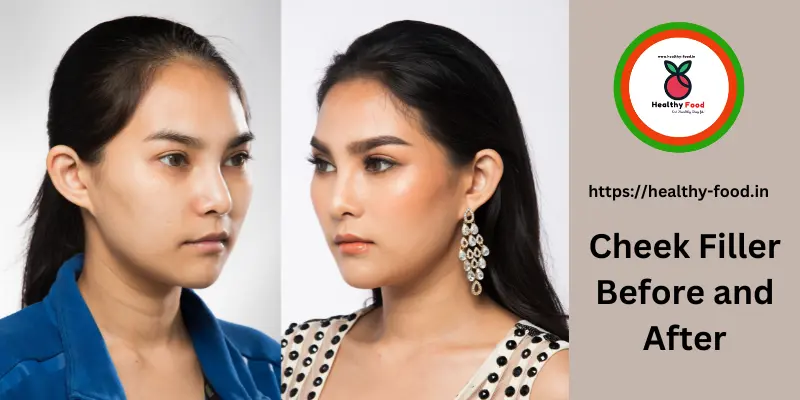
Cheeks fillers can instantly lift the cheeks and improve facial proportions. They are great for adding volume to the cheeks and replacing lost volume, and by volumizing the upper cheek, they can also make the lower eyelid look better.
We recommend using as little as 1 ml of filler per session for a better appearance.
Read more: Cheek Fillers: Ultimate Solution To Face Enhancement – 2023
Tear trough filler
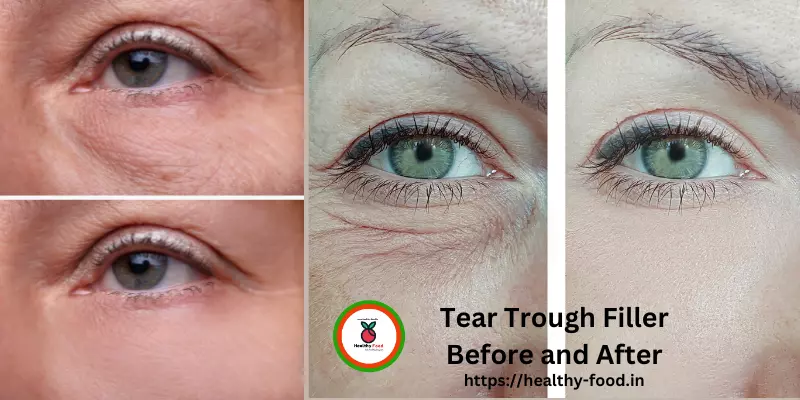
The spaces between the cheeks and lower eyelid are called tear troughs. Problems in this area create a dull look and tired appearance. Tear troughs can be treated without surgery by injecting dermal fillers in the middle of the cheek to support the lower eyelid.
Patients typically require 0.5 to 1 ml of tear trough filler to achieve a youthful appearance.
Nose filler
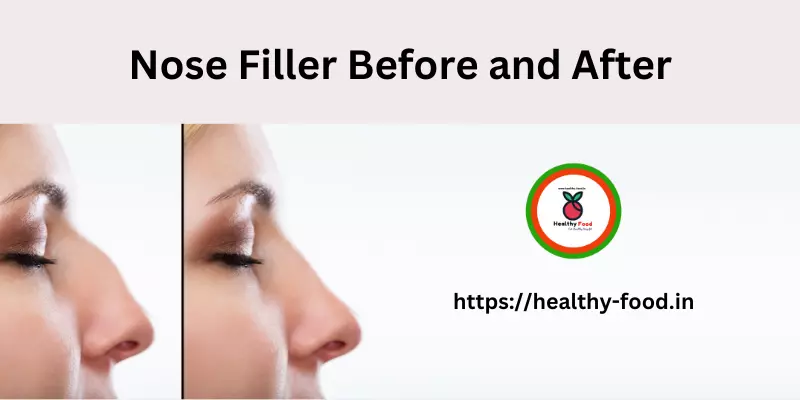
Adding height to the nose or straightening the nose can be accomplished with nose filler. Alternative to surgical rhinoplasty, it is a non-permanent and non-surgical option. Dermal fillers can’t fix bumps but can fill in hollows to straighten the nose. When used on people who have flat noses or nasal bridges that are less prominent, nose fillers can also raise the height of the nose.
To improve the nose’s overall appearance, some patients have chosen to have 1 ml of filler applied above and below the bump.
Forehead filler
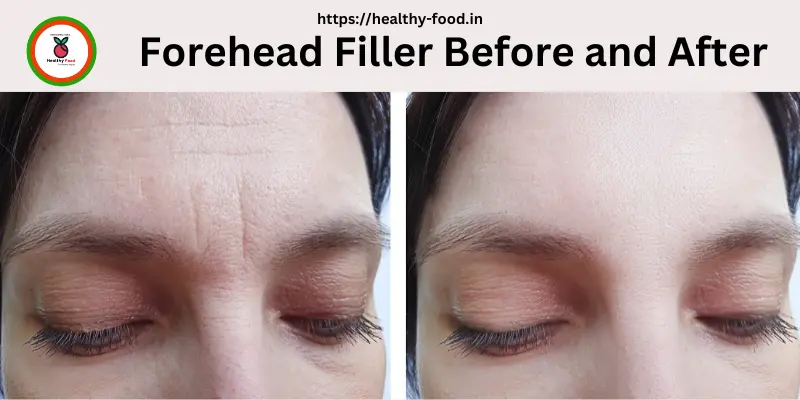
The muscles around the forehead can be relaxed with filler, which can smooth out wrinkles. When using forehead filler, avoiding drooping the brow or upper eyelid is essential. The filler can restore balance to the face and replace any volume that has been lost.
Use 1/2 ml or 1 ml cheek filler in a session to cover larger areas.
Temple filler

As volume loss in the temples can cause the eyebrows to appear hooded and alter the shape of the face, temple filler can restore the facial appearance. It can make a big difference by changing the volume and shape of the face.
Patients typically use 1 ml cheek filler or 2 ml cheek filler to fill their temples.
Chin filler
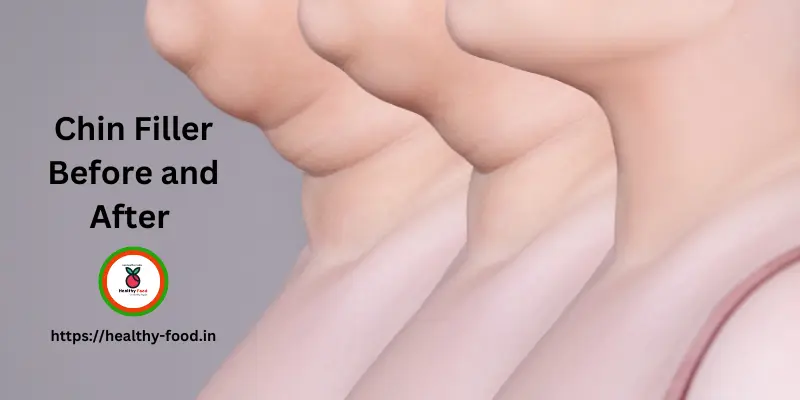
A firm or defined jawline can be achieved with chin filler. The jawline can be sharpened, the face profile can be balanced, and the amount of visible excess skin and fat in the neck can be reduced by enhancing the chin. These temporary fillers are injected into the chin to improve the chin’s shape and forward protrusion.
Injecting 1 ml check filler can balance the chin area of the patients.
Since we all age similarly, many of us have one or two concerns about significant volume loss. Focusing on these areas can make a big difference with just a little tweaking.
Patients typically receive about 1 ml cheek filler during a treatment; only a small portion of the syringe can be used on the treated area, and the remaining amount is spread across the entire face.
Benefits of 1 ml cheek filler
In the past, aestheticians would inject 1 ml of dermal filler into a single area of the face. For instance, they apply 1 ml of filler to improve lips and cheeks, and even only 1 ml of filler can improve the entire face.
The followings are the benefits or advantages of 1 ml cheek fillers:
- Hyaluronic acid (HA) fillers are suitable for the body.
- Non-Hyaluronic acid (Non-HA) fillers, too, have long-term benefits
- One dermal filler injection can plump up and smooth your skin to get a beautiful look.
- Add volume and give shape to your lips.
- Smooth out your smile lines.
- Contour your jaw and chin.
- Tighten your necklines and reduce aging.
- Eliminate the hollowness under your eyes.
- Firm your earlobes
- Treat deep acne scars
- Enhance your cheeks
- Get rid of hollow temples
- Maintain, sculpt, and define cheek and entire face
There are a few easy ways to extend the effects of fillers. You can also get a customized plan for touch-up treatments.
1 ml cheek filler Cost
If this is the first time you are considering dermal fillers, you will be surprised to know that many different fillers and techniques are available in the market these days. No one filler works best for everyone.
An overview of some of the most well-liked dermal fillers currently available is as follows:
Bellafill
- Bellafill, also known as Artefill, is an injectable wrinkle filler made of biocompatible microspheres and bovine collagen.
- Bellafill works with your body’s natural collagen levels to become more effective over time, resulting in more significant results with each application.
- Bellafill, like most fillers, can be applied in a short appointment and provides an immediate effect.
- Bellafill has a similar safety record to that of temporary fillers and has received full FDA approval, making it an excellent choice.
- On average, each syringe application of Bellafill costs approximately $1,000. The number of syringes varies from patient to patient for each application and as per their requirement, but the average cost is estimated to be around $2,600 per treatment.
The Restylane family of fillers
- A group of products is sold under the Restylane brand, known for its easy use and effective results.
- Restylane products, like Voluma, contain hyaluronic acid, which the body will eventually break down.
- Nasolabial folds, or lines that can form between the nose and mouth and are difficult to treat, are considered the best candidates for Restylane’s treatment. Each syringe of Restylane filler costs approximately $550 on average.
- Restylane-L is similar to and as effective as the original Restylane but also uses lidocaine, a numbing agent, to reduce discomfort. On average, each syringe typically costs between $500 and $800.
- Restylane Lyft is a better option for people who want to reduce particularly severe or deep wrinkles because it differs from Restylane-L and original Restylane. Restylane Lyft costs between $700 and $800 per syringe.
- People who want to reduce the appearance of wrinkles around the mouth and increase the volume around the lips prefer Restylane Silk. Syringes of Restylane Silk typically cost between $700 and $800.
Juvederm
- Juvederm, a filler made of hyaluronic acid, is one of the most well-known fillers currently on the market.
- Juvederm is especially well-known for its long-lasting results. This is the only hyaluronic acid filler the FDA approved to last up to a year after the initial application. Regular applications are recommended to achieve the best results and ideal outcomes as expected.
- People with moderate to severe facial wrinkles and folds are the best candidates for this kind of filler.
- The average cost of Juvederm is $550 per syringe; For lines around the lips, a single syringe may be sufficient; however, treatments for other areas typically require two or more syringes.
Volbella
- Volbella, a hyaluronic treatment made by Juvederm, is designed to reduce the signs of aging on the lips.
- Volbella is an excellent option for people who want a faster recovery time because it can improve the definition of lip contours, reduce creases in and around the lip, and reduce the amount of facial swelling a patient experiences after the procedure.
- Volbella typically costs between $400 and $750 per syringe. Because the targeted area is smaller, a single syringe may be sufficient for each treatment; however, your physician will provide additional guidance regarding your specific requirements.
Voluma
- Voluma, made by Juvederm as well, is a filler made to fix volume loss around the cheeks and cheekbones.
- Hyaluronic acid, a naturally occurring protein that has long been used to treat skin issues, is present in Voluma.
- Each syringe of Voluma costs between $900 and $1,200, though most people will need more than one syringe for each application. On average, the treatment cost can range from $4,000 to $2,600.
1 ml cheek filler before and after photo
Cheek Filler Before and After 1ml treatment
If you want the “natural look,” 1 ml of facial filler can help you to get that. Similar results can be seen below, using 1 ml cheek fillers before and after. However, your facial structure and aesthetic objectives determine the amount of filler used.
Questions to ask before filler treatment
If you’re investigating which clinical facility to go to for dermal filler treatment, You should ask the following essential questions:
- Who will administer the dermal filler treatment, the nurse or the doctor?
- Are the cosmetic nurses and doctors skilled enough to inject and have an aesthetic eye to ensure their patients look natural and not fake?
- How long do the appointments go for dermal filler treatment?
- Is there any latest before-and-after images gallery available at the medical clinic that you can view?
1 ml cheek filler before and after – FAQs
Will 1ml cheek filler make a difference?
Yes, 1 ml cheek filler can make a visible difference. They are great for adding volume to the cheeks and replacing lost volume, and by volumizing the upper cheek, they can also make the lower eyelid look better. We recommend using as little as 1 ml of cheek filler per session for a better appearance.
How long does 1 ml of cheek filler last?
Manufacturers claim that dermal filler for the cheeks lasts anywhere from 9 months to 1 year on average. The longevity of cheek filler varies from person to person. Longevity is impacted by the following factors: age, metabolism, the amount of filler injected at the time, the time since the last treatment, and the number of previous treatments.
Is 1ml enough for cheeks?
Traditionally, one milliliter should be applied to each cheek for lateral cheeks. For your mid cheeks, you might need a product like Restylane contour or Juvederm Vollure. Your nasolabial folds may look better after cheek support and contouring, and you may need less filler in that area once the cheeks are addressed.
How much filler do you need in each cheek?
This area may require a significant amount of filler if you have flattened cheeks or have significantly diminished volume due to age. Many patients need 1 cc to 3 ccs per side to achieve the desired results.
How much does 1 ml of filler look like?
Although measuring one milliliter of dermal filler may seem overly precise, it is crucial in aesthetics. 1 ml is approximately 1/5 of a teaspoon. The fine line between perfect results and an overfilled pout, which many patients want to avoid, is determined by every decimal in a milliliter.
How much is 1 ml of cheek filler?
Most syringes contain approximately ml of filler or about 1/5 of a teaspoon.
Is one syringe enough for cheek fillers?
The severity of your cheek skin laxity and your aesthetic goals determine how much filler you need for your treatment. Voluma syringes typically have a capacity of 1 cc, and many patients require anywhere from two to four syringes for complete cheek-filling treatment (one to two syringes for each cheek).

